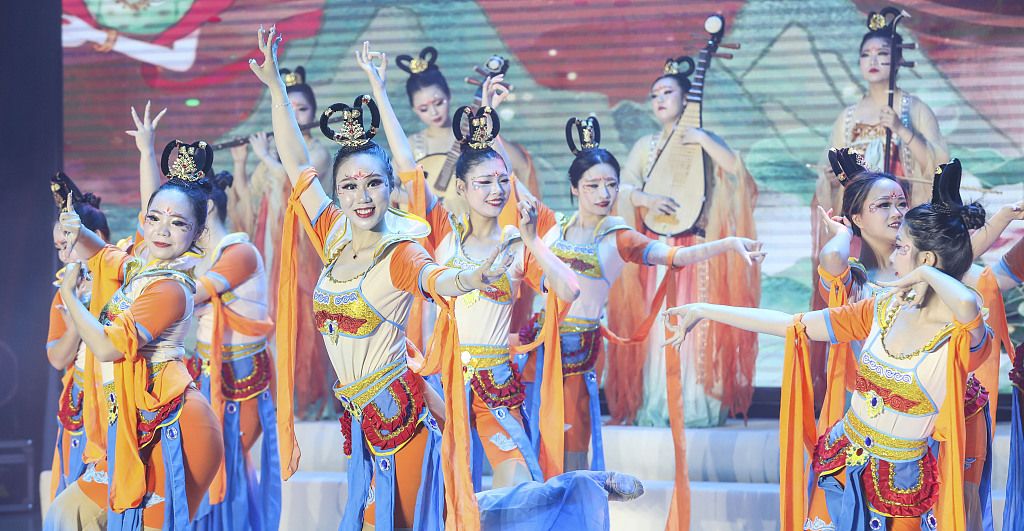
What are Feitian or Flying Apsaras?
Las Feitian o Flying Apsaras They are mythological figures from ancient China, famous for their appearance in the Dunhuang grottoes. They are celestial beings that symbolize beauty and grace and are represented as winged women who dance and play musical instruments in frescoes and sculptures.
These images date back to the Tang Dynasty (618-907) and are part of the Buddhist art that adorns the Dunhuang Grottoes, a world heritage site known for its rich collection of rock art.
Feitian (飞天) is a transliteration of the Sanskrit “Apsaras,” meaning “heavenly being” or “heavenly nymph.” In Indian tradition, Apsaras are female spirits of water and nature, known for their beauty and grace.
In the event, the dance seeks to imitate the graceful movements of these mythological beings while the music uses traditional Chinese instruments. This combination creates a multi-sensory experience that transports viewers back to ancient times, highlighting the richness and diversity of Chinese culture.

The meaning for the School
The 60th anniversary is an important milestone for Jiangsu Professional College of Finance and Economics. These types of celebrations strengthen the bond between students and their institution, while promoting the appreciation of traditional culture in a modern educational context. The performance underscores the importance of preserving and celebrating cultural traditions, while fostering institutional pride among students and staff.
The event was not only a display of talent and creativity, but also a reflection of the school’s commitment to cultural education and the preservation of Chinese heritage. The connection between ancient traditions and modern education serves as a reminder of the cultural richness that academic institutions can offer their communities.

Source: https://reporteasia.com/cultura/tradicion/2024/06/11/elegante-exhibicion-trajes-tradicionales-apsaras-voladoras/

